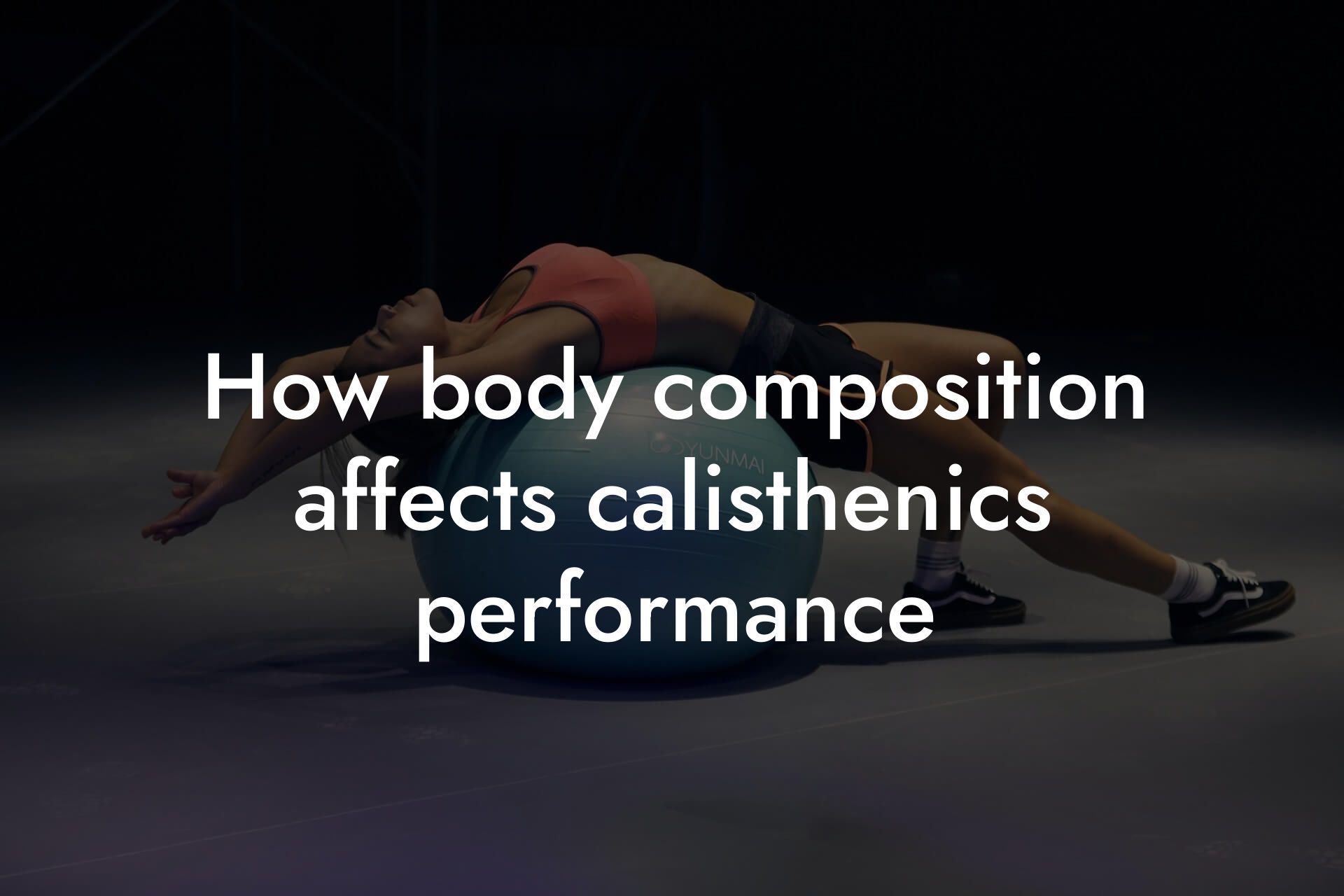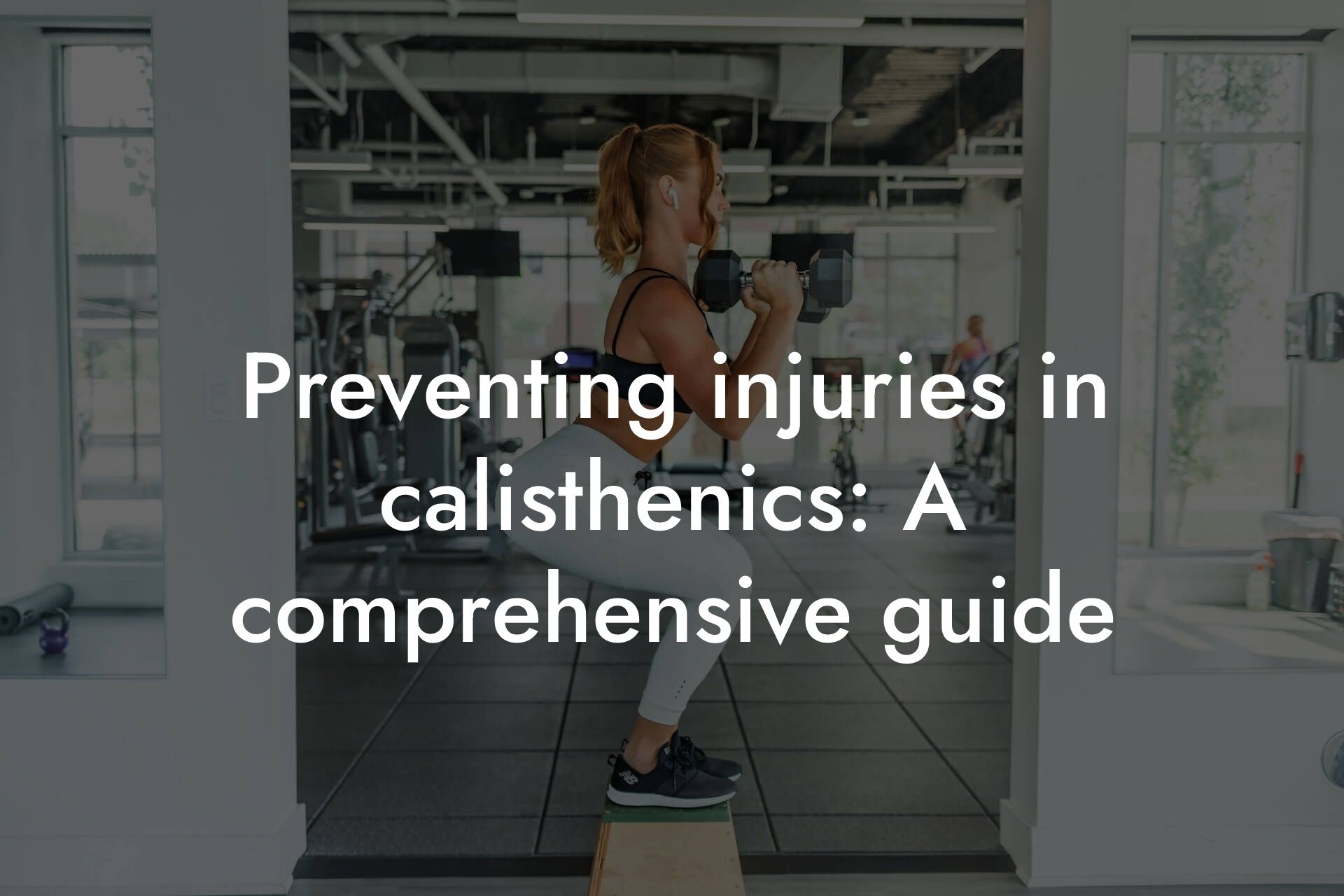As high-earning professionals, you understand the importance of maintaining a healthy and fit physique. Calisthenics, a form of exercise that uses body weight as resistance, is an excellent way to achieve this goal. However, to get the most out of calisthenics, it's essential to focus on building and maintaining lean muscle mass. In this article, we'll delve into the importance of lean muscle mass in calisthenics and provide you with a comprehensive guide to help you achieve your fitness goals.
Table of Contents
- What is Lean Muscle Mass?
- Why is Lean Muscle Mass Important in Calisthenics?
- How to Build Lean Muscle Mass for Calisthenics
- The Benefits of Lean Muscle Mass in Calisthenics
- How to Measure Lean Muscle Mass
- Common Mistakes to Avoid When Building Lean Muscle Mass
- Get Started with Tano Performance Group Today!
- Frequently Asked Questions
What is Lean Muscle Mass?
Lean muscle mass refers to the amount of muscle tissue in your body that is free from excess fat. It's the muscle mass that is responsible for strength, power, and endurance. Having a high percentage of lean muscle mass is essential for overall health and fitness. It not only enhances athletic performance but also plays a critical role in burning fat, improving bone density, and reducing the risk of chronic diseases.
Why is Lean Muscle Mass Important in Calisthenics?
Calisthenics is a high-intensity form of exercise that requires a significant amount of strength, power, and endurance. Having a high percentage of lean muscle mass is essential to perform calisthenic exercises efficiently and effectively. Lean muscle mass helps to:
- Generate force and power
- Improve muscle endurance
- Enhance athletic performance
- Reduce the risk of injury
- Improve overall fitness and health
How to Build Lean Muscle Mass for Calisthenics
Building lean muscle mass for calisthenics requires a combination of proper nutrition, consistent training, and sufficient rest. Here are some tips to help you build lean muscle mass:
- Focus on progressive overload: Gradually increase the intensity of your workouts by adding weight, reps, or sets over time.
- Eat enough protein: Consume 1.6-2.2 grams of protein per kilogram of body weight to support muscle growth and repair.
- Incorporate compound exercises: Focus on exercises that work multiple muscle groups at once, such as squats, deadlifts, and bench dips.
- Get enough rest: Ensure you get 7-9 hours of sleep and take rest days as needed to allow your muscles to recover and grow.
The Benefits of Lean Muscle Mass in Calisthenics
Having a high percentage of lean muscle mass in calisthenics provides numerous benefits, including:
- Improved athletic performance: Lean muscle mass enhances strength, power, and endurance, leading to better performance in calisthenic exercises.
- Increased metabolism: Lean muscle mass helps to boost metabolism, leading to increased fat loss and weight management.
- Improved bone density: Lean muscle mass helps to improve bone density, reducing the risk of osteoporosis and fractures.
- Enhanced overall health: Lean muscle mass has been linked to a reduced risk of chronic diseases, such as heart disease and diabetes.
How to Measure Lean Muscle Mass
Measuring lean muscle mass is crucial to track progress and identify areas for improvement. At Tano Performance Group, we use DEXA (Dual-Energy X-ray Absorptiometry) scans to provide a comprehensive body assessment, including lean muscle mass. DEXA scans are a non-invasive and accurate way to measure body composition, including lean muscle mass, fat mass, and bone density.
Common Mistakes to Avoid When Building Lean Muscle Mass
When building lean muscle mass for calisthenics, it's essential to avoid common mistakes that can hinder progress. Here are some mistakes to avoid:
- Insufficient nutrition: Failing to consume enough protein and calories can lead to muscle loss and fatigue.
- Inconsistent training: Failing to train consistently can lead to plateaus and muscle loss.
- Overtraining: Training too frequently or intensely can lead to muscle fatigue and injury.
- Inadequate rest: Failing to get enough rest and recovery time can lead to muscle fatigue and injury.
In conclusion, lean muscle mass is a critical component of calisthenics. It enhances athletic performance, improves overall health, and reduces the risk of chronic diseases. By focusing on building and maintaining lean muscle mass, you can take your calisthenic training to the next level. Remember to prioritize proper nutrition, consistent training, and sufficient rest to support muscle growth and repair. At Tano Performance Group, we're committed to helping you achieve your fitness goals with our comprehensive body assessment and personalized training programs.
Get Started with Tano Performance Group Today!
Ready to take your calisthenic training to the next level? Contact us today to schedule a DEXA scan and comprehensive body assessment. Our team of experts will work with you to create a personalized training program tailored to your fitness goals and needs. Don't wait – take the first step towards achieving the physique and performance you desire.
Frequently Asked Questions
What is lean muscle mass, and why is it important in calisthenics?
Lean muscle mass refers to the amount of muscle tissue in your body that is not accompanied by excess fat. In calisthenics, having a high percentage of lean muscle mass is crucial because it allows for optimal performance, strength, and endurance. It also helps with injury prevention and overall physical fitness.
How does lean muscle mass affect my physique?
Having a high percentage of lean muscle mass can significantly improve your physique by increasing muscle definition, boosting metabolism, and reducing body fat. This can lead to a more toned and athletic appearance, which is a common goal for many high-earning professionals interested in their physical appearance.
What are the benefits of having lean muscle mass in calisthenics?
The benefits of having lean muscle mass in calisthenics include increased strength, power, and endurance, improved bone density, enhanced athletic performance, and reduced risk of injury. Additionally, having lean muscle mass can also improve overall health and reduce the risk of chronic diseases such as diabetes and heart disease.
How do I build lean muscle mass?
Building lean muscle mass requires a combination of proper nutrition, consistent training, and sufficient rest. This can be achieved through a calisthenics training program that focuses on progressive overload, variety, and consistency, accompanied by a balanced diet that provides adequate protein, carbohydrates, and healthy fats.
What is the difference between lean muscle mass and bulky muscle mass?
Lean muscle mass refers to muscle tissue that is not accompanied by excess fat, whereas bulky muscle mass refers to muscle tissue that is accompanied by excess fat. Having lean muscle mass is more desirable in calisthenics because it allows for optimal performance and reduces the risk of injury, whereas bulky muscle mass can hinder performance and increase the risk of injury.
How does age affect lean muscle mass?
As we age, our bodies naturally lose muscle mass, a process known as sarcopenia. However, this process can be slowed down or even reversed through consistent resistance training and proper nutrition. It's essential for high-earning professionals to prioritize lean muscle mass maintenance as they age to maintain optimal physical function and overall health.
Can I build lean muscle mass without weights?
Yes, it is possible to build lean muscle mass without weights through calisthenics exercises that use your body weight as resistance. Examples of calisthenics exercises include push-ups, pull-ups, squats, and lunges. These exercises can be modified to increase intensity and challenge as you progress.
How does lean muscle mass affect my bone density?
Having lean muscle mass can help improve bone density by increasing the mechanical stress on bones, which stimulates bone growth and density. This is especially important for high-earning professionals who may be at risk of osteoporosis or osteopenia due to a sedentary lifestyle.
Can I lose lean muscle mass?
Yes, it is possible to lose lean muscle mass if you're not consuming enough protein, not engaging in regular resistance training, or experiencing chronic stress. Losing lean muscle mass can negatively impact your physique, athletic performance, and overall health.
How does lean muscle mass affect my metabolism?
Having lean muscle mass can help boost your metabolism, which can aid in weight loss and weight management. This is because muscle tissue requires more energy to maintain than fat tissue, so the more lean muscle mass you have, the higher your resting metabolic rate will be.
What are some common mistakes people make when trying to build lean muscle mass?
Common mistakes people make when trying to build lean muscle mass include not consuming enough protein, not engaging in consistent and progressive resistance training, not getting enough rest and recovery, and not monitoring their body fat percentage.
How long does it take to build lean muscle mass?
The amount of time it takes to build lean muscle mass varies depending on individual factors such as starting point, training program, and nutrition. However, with consistent and dedicated effort, it's possible to start seeing noticeable improvements in lean muscle mass within 6-12 weeks.
Can I build lean muscle mass at home?
Yes, it is possible to build lean muscle mass at home through bodyweight exercises, resistance band exercises, or even home workout programs that use minimal equipment. However, it's essential to ensure that your workout program is well-structured, progressive, and challenging to achieve optimal results.
How does lean muscle mass affect my athletic performance?
Having lean muscle mass can significantly improve athletic performance by increasing strength, power, speed, and endurance. This is because lean muscle mass allows for more efficient energy production, faster recovery, and improved overall physical function.
What role does nutrition play in building lean muscle mass?
Nutrition plays a critical role in building lean muscle mass by providing the necessary building blocks for muscle growth and repair. A balanced diet that includes adequate protein, carbohydrates, and healthy fats is essential for supporting muscle growth and recovery.
Can I build lean muscle mass if I'm a beginner?
Yes, it is possible to build lean muscle mass even if you're a beginner. It's essential to start with a well-structured workout program that progresses gradually, focuses on proper form and technique, and incorporates a balanced diet that supports muscle growth and recovery.
How does lean muscle mass affect my overall health?
Having lean muscle mass can significantly improve overall health by reducing the risk of chronic diseases such as diabetes, heart disease, and certain types of cancer. It can also improve mental health, reduce the risk of depression and anxiety, and enhance overall physical function.
What are some common myths about building lean muscle mass?
Common myths about building lean muscle mass include the idea that you need to spend hours in the gym, that you need to take expensive supplements, or that you need to follow a specific diet or training program. It's essential to separate fact from fiction and focus on evidence-based information when building lean muscle mass.
How does lean muscle mass affect my body fat percentage?
Having lean muscle mass can help reduce body fat percentage by increasing metabolism, improving insulin sensitivity, and enhancing overall physical function. This can lead to a more toned and athletic appearance, which is a common goal for many high-earning professionals interested in their physical appearance.
Can I maintain lean muscle mass as I age?
Yes, it is possible to maintain lean muscle mass as you age through consistent resistance training, proper nutrition, and sufficient rest and recovery. It's essential for high-earning professionals to prioritize lean muscle mass maintenance as they age to maintain optimal physical function and overall health.
How does lean muscle mass affect my energy levels?
Having lean muscle mass can help improve energy levels by increasing metabolism, improving insulin sensitivity, and enhancing overall physical function. This can lead to improved productivity, reduced fatigue, and enhanced overall well-being.
What are some common signs of low lean muscle mass?
Common signs of low lean muscle mass include fatigue, weakness, poor athletic performance, and a soft or flabby appearance. If you're experiencing any of these signs, it's essential to prioritize lean muscle mass building through a well-structured workout program and balanced diet.
Here are some related articles you might love...
- Using DEXA scans to monitor progress in calisthenics
- How body composition affects calisthenics performance
- Preventing injuries in calisthenics: A comprehensive guide
- Strength and conditioning programs for calisthenics practitioners
- Reducing body fat for improved strength-to-weight ratio in calisthenics
- Nutrition tips for calisthenics athletes
- Recovery strategies for calisthenics athletes
- Bone density and its role in calisthenics training
- How to build functional strength with calisthenics
Zak Faulkner
Zak Faulkner is a leading authority in the realm of physical health and body composition analysis, with over 15 years of experience helping professionals optimise their fitness and well-being. As one the experts behind Tano Performance Group, Zak has dedicated his career to providing in-depth, science-backed insights that empower clients to elevate their physical performance and overall health.
With extensive knowledge of DEXA technology, Zak specializes in delivering comprehensive body assessments that offer precise data on body fat, muscle mass, bone density, and overall physique. His expertise enables individuals to make informed decisions and achieve their fitness goals with accuracy and confidence. Zak’s approach is rooted in a deep understanding of human physiology, combined with a passion for helping clients unlock their full potential through personalised strategies.
Over the years, Zak has earned a reputation for his commitment to excellence, precision, and client-focused service. His guidance is trusted by top professionals who demand the best when it comes to their health. Whether advising on fitness programs, nutritional strategies, or long-term wellness plans, Zak Faulkner’s insights are a valuable resource for anyone serious about taking their health and fitness to the next level.
At Tano Performance Group, Zak continues to lead our Content Team revolutionising how professionals approach their physical health, offering unparalleled expertise that drives real results.




